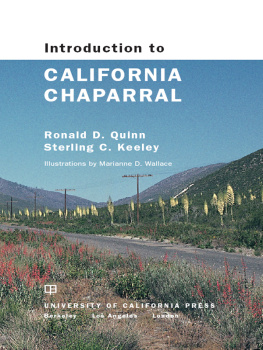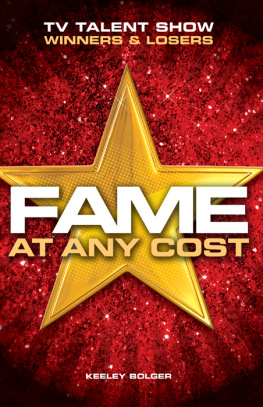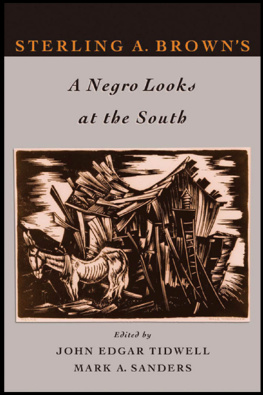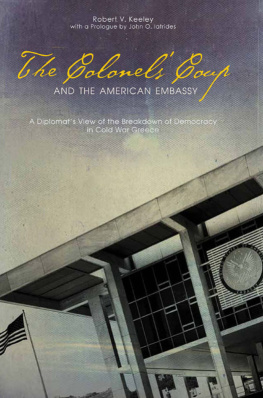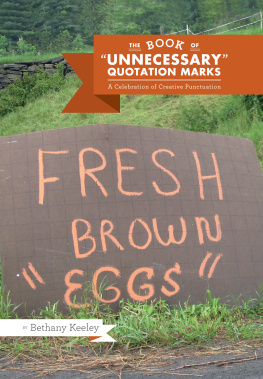Keeley Sterling C. - Introduction to California Chaparral
Here you can read online Keeley Sterling C. - Introduction to California Chaparral full text of the book (entire story) in english for free. Download pdf and epub, get meaning, cover and reviews about this ebook. City: Berkeley;Calif;California;Kalifornien, year: 2006, publisher: University of California Press, genre: Home and family. Description of the work, (preface) as well as reviews are available. Best literature library LitArk.com created for fans of good reading and offers a wide selection of genres:
Romance novel
Science fiction
Adventure
Detective
Science
History
Home and family
Prose
Art
Politics
Computer
Non-fiction
Religion
Business
Children
Humor
Choose a favorite category and find really read worthwhile books. Enjoy immersion in the world of imagination, feel the emotions of the characters or learn something new for yourself, make an fascinating discovery.
- Book:Introduction to California Chaparral
- Author:
- Publisher:University of California Press
- Genre:
- Year:2006
- City:Berkeley;Calif;California;Kalifornien
- Rating:5 / 5
- Favourites:Add to favourites
- Your mark:
- 100
- 1
- 2
- 3
- 4
- 5
Introduction to California Chaparral: summary, description and annotation
We offer to read an annotation, description, summary or preface (depends on what the author of the book "Introduction to California Chaparral" wrote himself). If you haven't found the necessary information about the book — write in the comments, we will try to find it.
Introduction to California Chaparral — read online for free the complete book (whole text) full work
Below is the text of the book, divided by pages. System saving the place of the last page read, allows you to conveniently read the book "Introduction to California Chaparral" online for free, without having to search again every time where you left off. Put a bookmark, and you can go to the page where you finished reading at any time.
Font size:
Interval:
Bookmark:

Sterling C. Keeley is Professor of Botany at the University of Hawaii in Honolulu. She served as the scientific adviser for the Chaparral Hall at the Los Angeles County Museum of Natural History and edited The California Chaparral: Paradigms Reexamined (1989). In California, her research focused on the fire-following plants of the chaparral.

Ronald D. Quinn is Professor of Biological Sciences at California State Polytechnic University, Pomona. He has published widely on effects of fire and herbivory on chaparral, and other mediterranean ecosystems of the world.
Marianne D. Wallace has been a natural science illustrator and educator for over 30 years. She lives in the foothills of southern California, sharing her toyon-bordered backyard with wood rats, Mule Deer, Wrentits, and other chaparral species.
I give heartfelt thanks to my spouse, Barbara Ellis-Quinn, who in countless ways has acted as a patient and supportive midwife for the rather protracted birth of this book. She reviewed the manuscript in its entirety and created a quiet office and a warm home for writing. My friend Ken Montgomery, a botanist and horticulturist with a true love of plants native to California, provided hours of discussion and dreaming when I first thought to write this book a half lifetime ago. He has given me support, encouragement, and suggestions when they were most needed. The Rancho Santa Ana Botanic Garden of Claremont, California, has provided many days of pleasure and inspiration, as well as a place to take photographs for this book. Steve Shirley and his airplane gave me a new perspective and some photographs of wildfires at the urban-wildland interface. Rick Halsey's boundless enthusiasm was inspirational, as was his generosity with his ideas. Mike Raugh, mathematician and accomplished naturalist, reviewed a large part of the manuscript. Colleagues Chris Brady, Glenn Stewart, and Gary Wallace reviewed various parts of the manuscript. William D. Wagner provided insights on birds. Jim Dole, who first introduced me to the delights and challenges of chaparral ecology, set me on a path that has lasted a lifetime. Finally, I am grateful to students of chaparral biology at California State Polytechnic University, Pomona, who over the years have been an endless source of enthusiasm to me for all things to do with chaparral.
Ronald D. Quinn
February 2006
This book would never have come into being were it not for the inspiration and support of many people. For starting my career in chaparral research and encouraging my efforts along the way, Harold Mooney of Stanford University, deserves my deepest gratitude. Nancy Coile, of the University of Georgia, provided the initial inspiration to write this book while visiting and collecting ceanothus. My sister, Christine Thompson, willingly took hikes with me while I photographed and pontificated, read countless drafts, and buoyed up my enthusiasm when it flagged. Frank Hovore spent many hours providing interesting information about insects and animals of the chaparral, and reading drafts, as well as providing some fabulous photos. Steve Davis, Robert Gustafson, Linda Hardie-Scott, Charles Hogue, Dave Minor, Philip Rundel, Timothy Thomas, Sherry Wood, and Paul Zedler provided wonderful photographs and have been waiting for them to be returned since the early 1990s. Their generosity and patience are much appreciated. Shirleen Gudmuson, Christa Hatch, Linda Kate Schroeder, and Peter Vroom all contributed to editing, reviewing, and refining the manuscript during its various incarnations. My students at Whittier College allowed me to share my delight in the chaparral and to do original research that would not have been possible without them. They taught me to see the natural world in new ways, for which I am truly grateful. Thanks to Phil Rundel and one anonymous reviewer for contributing to the quality of the book. And finally, our thanks to the editors, Phyllis Faber, who suggested we work together on this project, and Doris Kretschmer, who worked out the details and kept us on track.
Sterling C. Keeley
February 2006
Photographs were generously provided by a number of colleagues. Individual slide credits are given below; those not listed are from the authors' personal collections.
STEPHEN DAVIS, Pepperdine University
JACQUES DESCLOITRES, courtesy of NASA
WILLIAM FOLLETTE
ROBERT GUSTAFSON, Los Angeles Country Museum of Natural History
LINDA HARDIE-SCOTT, The Nature Conservancy
CHARLES HOGUE, Los Angeles County Museum of Natural History
FRANK HOVORE/DEDE GILMAN, Hovore Associates
GLENN KEATOR
PHILIP RUNDEL, University of California at Los Angeles
TIMOTHY THOMAS, U.S. Fish and Wildlife Service
SHERRY WOOD, Gonzaga University
PAUL ZEDLER, University of Wisconsin
Chamise shrubs drawn after Arthur W. Sampson, Plant succession on burned chaparral lands in northern California, Calif. Agric. Exper. Stn. Bull. 685, 1944.
Drawn in part from Hazel Gordon and Thomas C. White, Ecological Guide to Southern California Chaparral Plant Series: Transverse and Peninsular Ranges: Angeles, Cleveland, and San Bernardino National Forests, RS-ECOL-TP-005 (San Francisco: Cleveland National Forest, U.S.D.A. Forest Service, 1994).
Cone redrawn with permission from Jim W. Dole and Betty B. Rose, Shrubs and Trees of the Southern California Coastal Region (North Hills, Calif.: Foot-loose Press, 1996).
Whiptail drawn after photograph by Nathan W. Cohen in Alden H. Miller and Robert C. Stebbins, The Lives of Desert Animals in Joshua Tree National Monument (Berkeley and Los Angeles: University of California Press, 1964).
of Klaus W. H. Radtke, Living More Safely in the Chaparral-Urban Interface, General Technical Report PSW-67 (Berkeley, Calif.: Pacific Southwest Forest and Range Experiment Station, U.S. Department of Agriculture, 1983).


CHAPARRAL IS BOTH a vegetation type and the name given to the community of coadapted plants and animals found in the foothills and mountains throughout California. The chaparral vegetation is composed of a diverse assemblage of different species of evergreen drought- and fire-hardy shrubs. Seen from the car window or scenic lookout, chaparral looks like a soft bluish green blanket gently covering the hills. Up close, however, this blanket no longer appears soft. Instead, what is revealed is a nearly impenetrable thicket of shrubs with intertwined branches and twigs with hard leaves and stiff and unyielding stems. The shrubs are well adapted to the rigors of long, hot, dry summers and unpredictable winter rainfall that are characteristic of California's mediterranean climate. Chaparral is especially extensive in the central and southern parts of the state, but it covers large areas of northern California as well ().
Font size:
Interval:
Bookmark:
Similar books «Introduction to California Chaparral»
Look at similar books to Introduction to California Chaparral. We have selected literature similar in name and meaning in the hope of providing readers with more options to find new, interesting, not yet read works.
Discussion, reviews of the book Introduction to California Chaparral and just readers' own opinions. Leave your comments, write what you think about the work, its meaning or the main characters. Specify what exactly you liked and what you didn't like, and why you think so.

